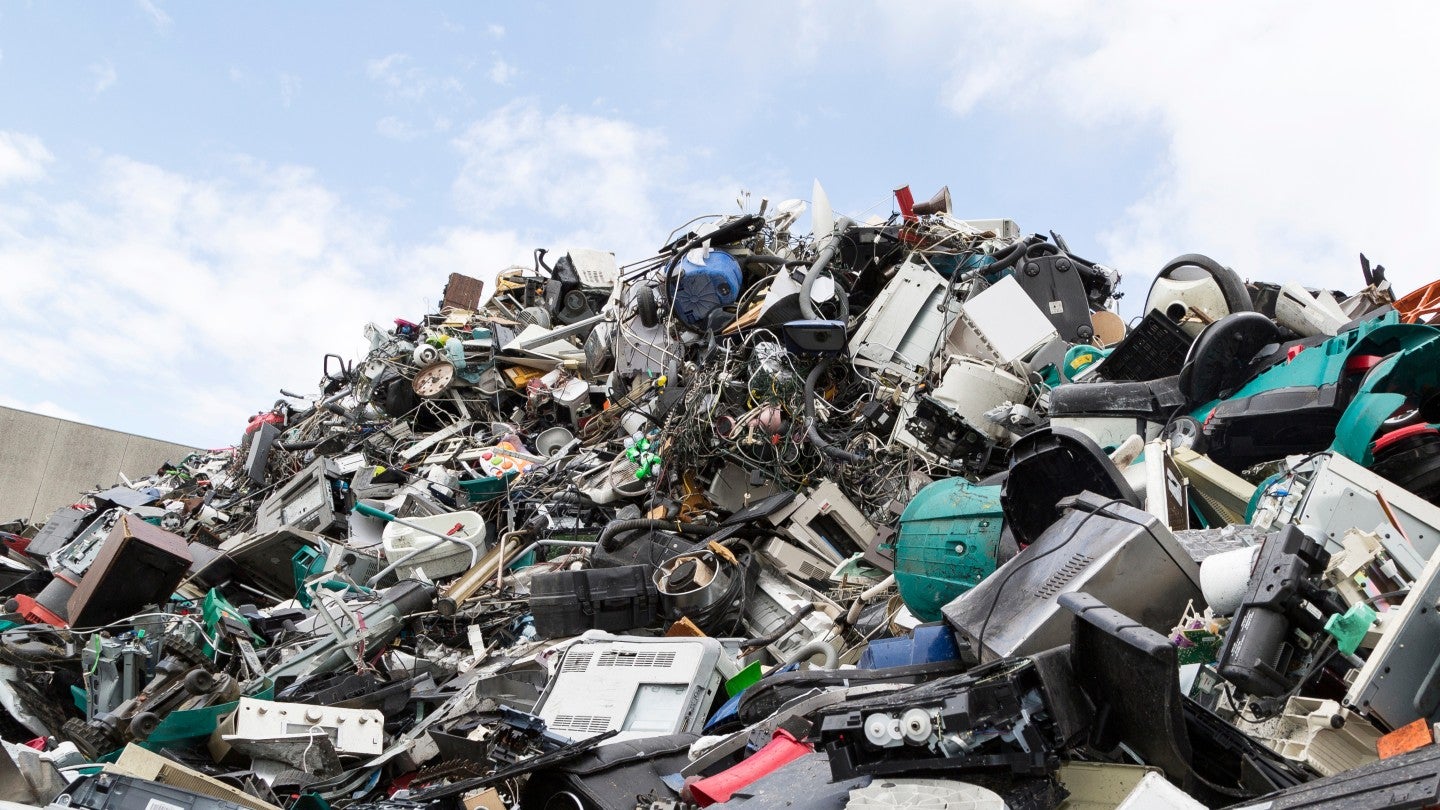
In March 2024, The United Nations Institute for Training and Research’s (UNITAR) Global E-Waste Monitor report found 62 million metric tons of mobile phones and devices were dumped on the planet throughout 2022, representing an increase of almost 200% from 34 billion kilograms in 2010.
The sheer quantity of e-waste raises questions both for its impact on the environment and highlights the pressing need for electronic device repair and re-use regulations across the world.
GlobalData’s thematic analyst, Thomas Pothalingam explains that e-waste is a significant issue due to its toxic and polluting nature alongside the broader issues of material scarcity and the politicisation of clean energy transition technologies like EV batteries.
E-waste, as a term, is used to mean anything from refrigerators to monitors, toasters and small telecommunication devices like phones, to laptops and GPS devices.
The toxic e-waste lifecycle
The UN’s Global E-Waste Monitor report found that only 13.8 billion kilograms of the e-waste produced in 2022 was documented as formally collected and recycled in an environmentally sound manner. The report also highlights how much e-waste is shipped around the world, with 5.5 billion kilograms of e-waste shipped from one country to another in 2022. Within this volume of e-waste, 65% was uncontrolled transboundary movements of e-waste from high to middle and low-income countries.
A World Health Organisation leaflet on the health impacts of e-waste highlights how informal recycling attempts can leave children exposed to lead, cadmium, chromium, brominated flame retardants and polybrominated dioxins.
How well do you really know your competitors?
Access the most comprehensive Company Profiles on the market, powered by GlobalData. Save hours of research. Gain competitive edge.

Thank you!
Your download email will arrive shortly
Not ready to buy yet? Download a free sample
We are confident about the unique quality of our Company Profiles. However, we want you to make the most beneficial decision for your business, so we offer a free sample that you can download by submitting the below form
By GlobalDataRight-to-repair laws
One way to address the amount of e-waste is to increase legislation mandating the right-to-repair.
GlobalData senior analyst, Anisha Bhatia, specialises in researching the circular economy pertaining to consumer devices. Bhatia does not think that any big companies are meaningfully attempting to reduce e-waste commenting “in the end it is more financially viable for Apple to sell a new device than do anything to reduce e-waste”.
Within the US market, Bhatia notes that Big Tech companies including Apple invest heavily in lobbying and influencing state laws, resulting in legislation being watered down – citing New York as an example.
While there has been some movement in regulation in California, the relevant bill is only applicable to new devices and not back-dated so it does little to stop the rising tide of electric waste.
Oregon’s newest disruptive right-to-repair bill, passed in the US in March 2024, has set a precedent by banning parts pairing, a practice that has restricted independent repairs, but it is limited to just one out of 50 US states.
Bhatia highlights that repair does not generate as much profit for companies as new device purchases, and cellular payment plans in the US are set up to tie consumers into buying new phones. Bhatia also notes how repairability often has become a marketing gimmick with brands such as Nokia leaning on easy repairability as a selling point.
Elsewhere, the EU is leading the way for right-to-repair legislation. Recently, EU lawmakers approved a right-to-repair law which should allow consumers to claim free or reasonably priced repairs after warranty expiration and will extend the guarantee time by one year if repaired within the warranty time. The law will also ban software and hardware that obstruct repairs.
This legislation has been approved by the European Parliament but is awaiting final approval from EU member states. If successful, member state governments will be able to penalise companies that do not comply.
The future of e-waste
With UNITAR predicting e-waste reaching 82 million metric tonnes in 2030, new regulation is needed all over the world to combat it.
Bhatia’s recent GlobalData report on the circular economy highlights that although Oregon and the EU’s recent legislation denote a shift towards a more circular economy, there are still “significant contrasts between the approaches to regulation of device repair and maintenance in the European and US markets, affecting consumer choice and implications for environmental sustainability and economic practices.”
For businesses to adopt the principles of a circular economy, Pothalingam explains it “would require regulations that target a significant improvement in manufacturing, extraction, and processing systems, which could be stimulated by geopolitical and commercial opportunity.”
Speaking specifically on battery waste which is often the most hazardous and materially scarce component of e-waste, Pothalingam says, “ultimately, there is an antagonism between the need to match the demand for battery metals and the immediate availability of sustainable and ethical battery metal supply chains.”
“The production of new batteries is environmentally damaging across the entire value chain, from the mineral extraction to a battery’s end-of-life disposal and processing. Water use, toxic fumes, carbon emissions, and raw and critical mineral depletion are just some of the many ways in which battery production can be damaging” he adds.







